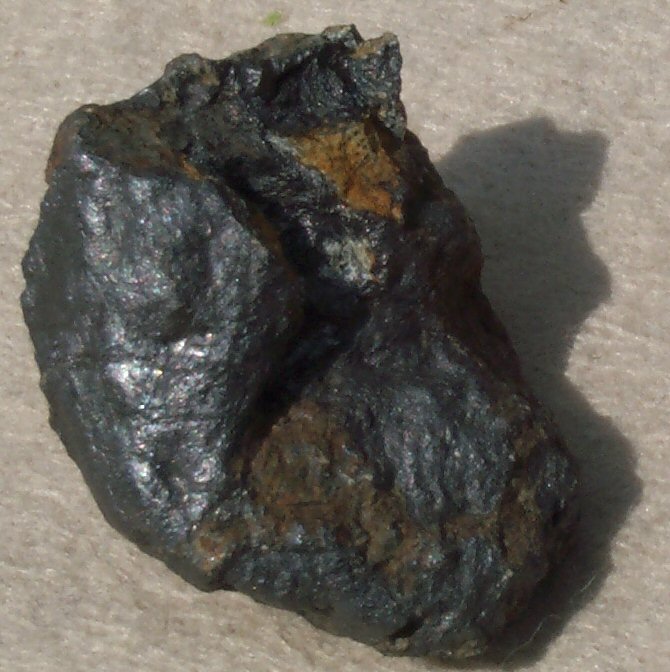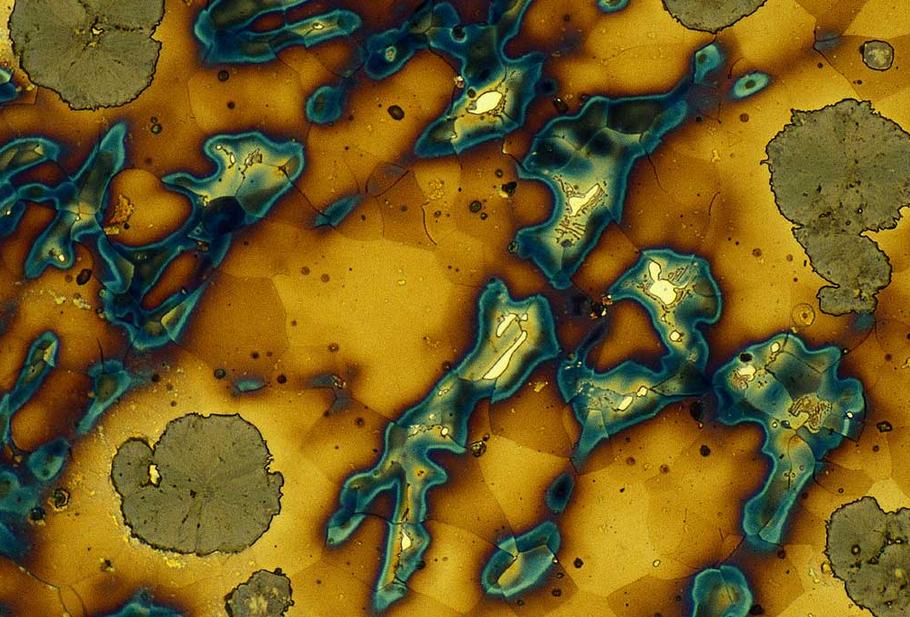What is Graphite ?
Graphite is very soft. It is used in the “lead” of pencils, which contain no lead at all, but are made of graphite and clay. Strangely enough, graphite has exactly the same chemical formula as diamond, the hardest substance known to mankind. They are both carbon. In diamond, the atoms of carbon lock together into an incredibly strong structure. In graphite, the atoms are arranged in a different way, in layers. This means that one layer can be rubbed off quite easily, which is what happens when you write with a pencil. If you tried to write with a diamond pencil, you would gouge holes in the paper, and the table underneath!
 Graphite
Graphite
The mineral graphite is an allotrope of carbon. It was named by Abraham Gottlob Werner in 1789 from the Ancient Greek “to draw/write”, for its use in pencils, where it is commonly called lead (not to be confused with the metallic element lead). Unlike diamond (another carbon allotrope), graphite is an electrical conductor, a semimetal.
It is, consequently, useful in such applications as arc lamp electrodes. Graphite is the most stable form of carbon under standard conditions. Therefore, it is used in thermochemistry as the standard state for defining the heat of formation of carbon compounds. Graphite may be considered the highest grade of coal, just above anthracite and alternatively called meta-anthracite, although it is not normally used as fuel because it is difficult to ignite.
Graphene from graphite: Graphene is one layer of carbon atoms linked chickenwire-like within graphite.
Graphite is a polymorph of the element carbon. diamond is another polymorph. The two share the same chemistry, carbon, but have very different structures and very different properties.
- Diamond is the hardest mineral known to man, Graphite is one of the softest.
- Diamond is an excellent electrical insulator, Graphite is a good conductor of electricity.
- Diamond is the ultimate abrasive, Graphite is a very good lubricant.
- Diamond is usually transparent, Graphite is opaque.
- Diamond crystallizes in the Isometric system and graphite crystallizes in the hexagonal system.
Graphite has a layered, planar structure. In each layer, the carbon atoms are arranged in a hexagonal lattice with separation of 0.142 nm, and the distance between planes is 0.335 nm. The two known forms of graphite, alpha (hexagonal) and beta (rhombohedral), have very similar physical properties (except that the graphene layers stack slightly differently). The hexagonal graphite may be either flat or buckled. The alpha form can be converted to the beta form through mechanical treatment and the beta form reverts to the alpha form when it is heated above 1300 °C. The layering contributes to its lower density.
Graphite occurs in metamorphic rocks as a result of the reduction of sedimentary carbon compounds during metamorphism. It also occurs in igneous rocks and in meteorites. Minerals associated with graphite include quartz, calcite, micas and tourmaline. In meteorites it occurs with troilite and silicate minerals.
According to the United States Geological Survey (USGS), world production of natural graphite in 2008 was 1,110 thousand tonnes (kt), of which the following major exporters are: China (800 kt), India (130 kt), Brazil (76 kt), North Korea (30 kt) and Canada (28 kt). Graphite is not mined in the US, but US production of synthetic graphite in 2007 was 198 kt valued at $1.18 billion. US graphite consumption was 42 kt and 200 kt for natural and synthetic graphite, respectively.
You might also like
| Types of Cast Iron Cast Iron - a Definition Cast irons typically... | What is Malleable Cast Iron ? Malleable Cast Iron - a Definition Malleable... | Do you know Meehanite metal ? Meehanite Meehanite is a trademark for... | What is Grey Cast Iron ? Grey Cast Iron - Meaning and Definition Grey... |



 Alloy Suppliers
Alloy Suppliers
 Aluminum
Aluminum
 Aluminum Extrusions
Aluminum Extrusions
 Copper-Brass-Bronze
Copper-Brass-Bronze
 Nickel
Nickel
 Magnets
Magnets
 Stainless Steel
Stainless Steel
 Stainless Steel Tubing
Stainless Steel Tubing
 Steel Service Centers
Steel Service Centers
 Titanium
Titanium
 Tungsten
Tungsten
 Wire Rope
Wire Rope